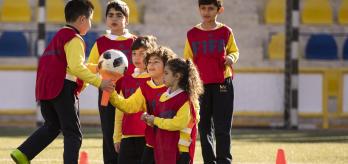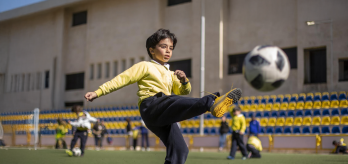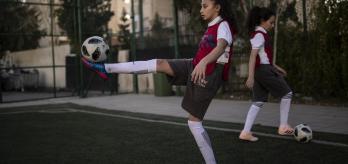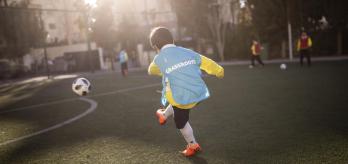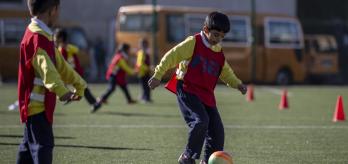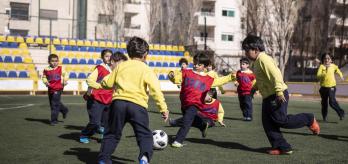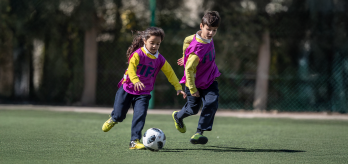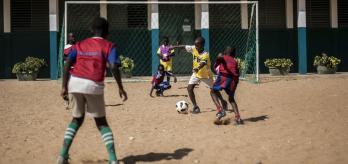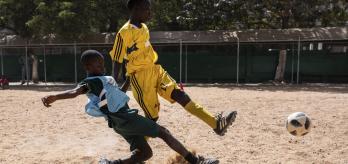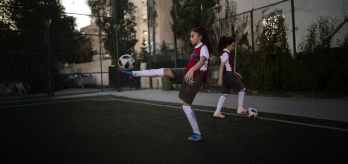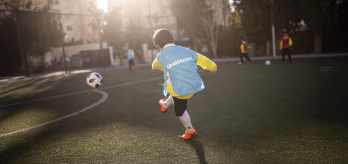In another edition of FIFA’s Grassroots Coaching Essentials series, Dr Vanessa Martínez Lagunas discusses skill development and how to make the most of it during training sessions by designing activities for players aged 12 to 15. The article provides coaches with three key tips to optimise skill development: keep the core theme central, incorporate competition, and include game-like scenarios. Additionally, coaches will gain valuable insights into designing effective training activities that engage players, accelerate development, and create a positive environment that aids the learning process.
Below, you will find a video presentation in which Vanessa explains these three tips in further detail, followed by a written summary of the discussed points and diagrams with best-practice examples of these crucial coaching points that can be used during training sessions to optimise your players’ skill development.
Tip 1: Keep the core theme central
It is important that coaches design activities relating to skill development that are connected to the core theme of the session, making the learning process much clearer for everyone involved. In this section, Vanessa explains why maintaining a central theme throughout a session enhances skill development and how coaches can apply this approach effectively:
- Aids the learning process: Incorporating the main session theme into activities engages players as it enables them to understand the purpose of the activity.
- Add plenty of repetition: Make sure activities are carefully structured to provide young players with plenty of opportunities to develop and refine their ball skills through repetition.
- Pose relevant questions: Coaches should pose leading questions that help players to recognise and understand the key lessons within the activity on their own.
Tip 2: Incorporate competition
Developing skills often involves a lot of repetition and can become monotonous for younger players, but adding competition is a great way to keep them engaged and having fun. Here, Vanessa highlights the importance of adding competitive elements into practice, and how coaches can do so effectively:
- Competition increases engagement: Introducing competitive elements into activities helps keep players engaged, maintaining their enthusiasm and enjoyment, while still improving their technical skills.
- Speed up development: Adding competition into games enables players to develop their skills at a faster pace while also challenging them to improve more effectively.
- Ensure all players are included: Coaches should adapt their activities so that all players can feel included and engaged in the session, no matter their skill level or experience.
Tip 3: Create game-like scenarios
Vanessa’s final tip is to add plenty of game-like scenarios into an activity as it helps to foster players’ creativity and improves their in-game problem-solving. In this section, Vanessa explains why including game-like situations is key to the development of young players:
- Improve awareness: Practising real-game situations during activities helps improve a player's problem-solving skills and enhances their ability to make quick, effective decisions under pressure.
- Foster creativity and problem-solving: Game-like activities encourage players to try new skills, find creative solutions, and develop their ability to think outside the box in dynamic situations.
- Build confidence through success: By designing activities that allow players to experience success, coaches can create a positive environment which builds confidence and encourages them to take on new challenges.
Key Take-aways
Based on the key insights shared by Vanessa in this presentation, coaches should now have a clearer understanding of how to optimise skill development through activities for players aged 12 to 15. Here is a summary of the essential take-aways from this presentation:
- Always keep the core session theme central: By keeping the main session theme central to each activity, coaches can ensure that each exercise is meaningful and relevant.
- Incorporate competition: It boosts players’ motivation and encourages effort while they develop their core technical skills and have fun.
- Create game-like scenarios: This helps players connect technique with decision-making, enhancing their ability to read the game and make smart plays. It also increases the possibility of players applying the learned skills in real games.


